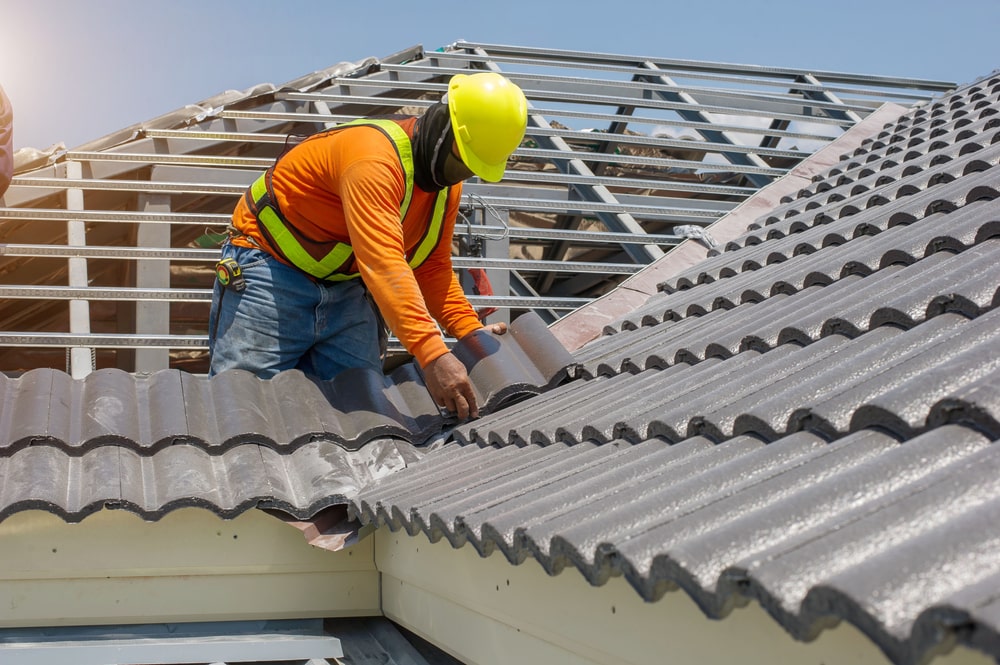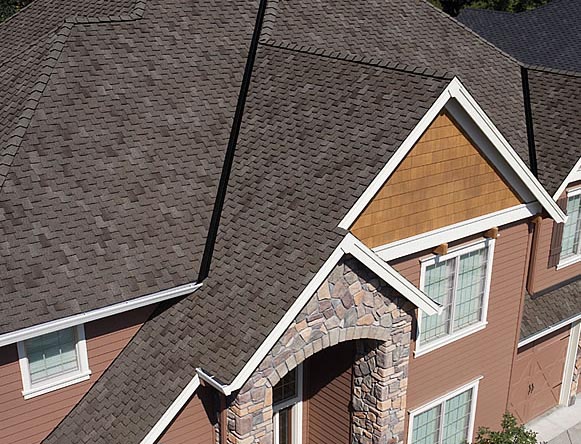Vital Inquiries to Ask Gainesville Roofing Companies Prior To Working With
Vital Inquiries to Ask Gainesville Roofing Companies Prior To Working With
Blog Article
Best Practices for Ensuring Proper Roof Ventilation
A balanced consumption and exhaust air vent ratio, commonly 1:300, plays a crucial duty, with consumption vents preferably put at the reduced edge of the roof for cool air entry and exhaust vents at the height for warm air departure. Maintaining insulation away from vents is crucial to avoid air movement restriction.
Understand Ventilation Fundamentals
Correctly comprehending air flow essentials is important for making sure the long life and efficiency of roof covering systems. Reliable air flow mitigates wetness buildup and temperature level extremes in the attic room, both of which can lead to significant architectural damage over time. A well-ventilated roof covering aids in avoiding usual concerns such as mold and mildew development, wood rot, and ice dams, which can endanger the honesty of the roof products and the underlying frameworks.
The main objective of ventilation is to facilitate the activity of air, enabling for a regular exchange between the indoor and outside environments. This equilibrium is attained via a mix of consumption and exhaust vents that collaborate to keep optimum airflow. Consumption vents, typically situated along the soffits or eaves, permit fresh air to enter the attic space, while exhaust vents, usually situated at or near the roofing ridge, enable warm, moist air to leave.
Secret aspects affecting the effectiveness of roofing air flow consist of appropriate placement, appropriate sizing, and making sure that both intake and exhaust vents are unobstructed. Routine assessment and maintenance are essential to determine potential blockages, damage, or inefficiencies in the ventilation system, thus protecting the roofing system's efficiency and sturdiness.
Sorts Of Roof Vents
Roofing vents play a critical role in preserving effective attic air flow and, by extension, the general health and wellness of the roof. Different kinds of roof covering vents are readily available, each with special benefits tailored to certain roof requirements. Ridge vents, for example, are set up along the roof's top, enabling cozy, humid air to get away from the attic. They supply continual ventilation and blend perfectly with the roofline, making them both effective and visually pleasing.

Soffit vents are mounted under the eaves and work in tandem with roof vents to make certain a balanced intake and exhaust system. By enabling cooler air to get in from below, soffit vents assist in the expulsion of hot air with top vents. Gable vents, situated on the outside wall surfaces of the attic, offer an additional efficient remedy, specifically in homes with saddleback roofs.
Assess Your Current Air Flow

Next, take into consideration the age and problem of your roofing materials and ventilation elements. Older systems may not abide by current structure codes or may have weakened with time, reducing their efficiency. view it Conduct a detailed exam to recognize any kind of indicators of deterioration, such as rust, damage, or spaces that might endanger the system's efficiency.
Additionally, measure the attic temperature and humidity levels. High temperature levels and moisture can indicate inadequate air flow.
Setup Best Practices
Effective installment of roof air flow systems is vital for ensuring ideal efficiency and long life. Correct installment begins with understanding the particular air flow needs of the structure and the roofing system it covers. This includes computing the correct ratio of intake to exhaust vents, generally sticking to the 1:300 policy, which states one square foot of air flow for every 300 square feet of attic room flooring room.

The placement of vents is just as important. Intake vents need to be installed at the roof covering's lower side, usually in the soffits, to enable awesome air to enter. Exhaust vents, on the various other hand, ought to be set up near or at the roof's peak to promote the exit of cozy, damp air. This creates a natural air flow that helps preserve temperature and dampness equilibrium within the attic room room.
Seal all vent links diligently to stop air leaks and possible water infiltration. Use high-grade materials and follow maker guidelines to guarantee resilience and performance. In addition, integrating ridge vents with baffles can substantially enhance air flow effectiveness by preventing wind-driven rainfall and snow from going into the attic room.
Eventually, accurate installation of roofing ventilation systems reduces possible concerns such as mold and mildew development, ice dams, and architectural damage, ensuring the roof's stability and the structure's total health.
Normal Upkeep Tips
Consistency in maintenance techniques Continued is essential to making sure the long-lasting performance of roof covering air flow systems. Regular inspections are vital, ideally done biannually-- in the spring and loss. Throughout these examinations, make sure that vents are free of debris, nests, and other obstructions that could hinder air movement. Look for any indications of wetness build-up or mold and mildew, as these can show inappropriate air flow or leakages (roofing companies in gainesville florida).
Make use of a soft brush or a vacuum cleaner to remove dirt and debris from intake and exhaust vents. Be mindful not to harm the vent screens or louvers during the procedure.
Correct insulation is just as vital. Make certain that attic insulation does not block the vents, as this can drastically limit air movement. If any kind of insulation has actually shifted or cleared up, reposition or replace it to maintain an effective obstacle.
Finally, replace any kind of harmed or missing out on parts quickly. Broken vents, split tiles, or worn-out blinking can all add to insufficient ventilation and must be resolved right away. Normal upkeep makes sure that the roof covering ventilation system functions ideally, thereby prolonging the life expectancy of the roofing system itself.
Verdict
Ensuring proper roof covering air flow is extremely important for keeping the performance and sturdiness of a roof system. Adherence to the 1:300 intake and exhaust air vent proportion, paired with the strategic positioning of vents, is crucial.
A well balanced intake and exhaust vent proportion, generally 1:300, plays a crucial role, with consumption vents preferably positioned at the lower edge of the roof for trendy have a peek at these guys air entry and exhaust vents at the height for cozy air leave. Intake vents, typically situated along the eaves or soffits, permit fresh air to enter the attic area, while exhaust vents, commonly positioned at or near the roofing system ridge, enable hot, humid air to leave.
Soffit vents are set up under the eaves and work in tandem with roofing vents to ensure a well balanced intake and exhaust system. By permitting cooler air to get in from below, soffit vents assist in the expulsion of warm air through top vents. Adherence to the 1:300 consumption and exhaust air vent proportion, combined with the calculated positioning of vents, is important.
Report this page